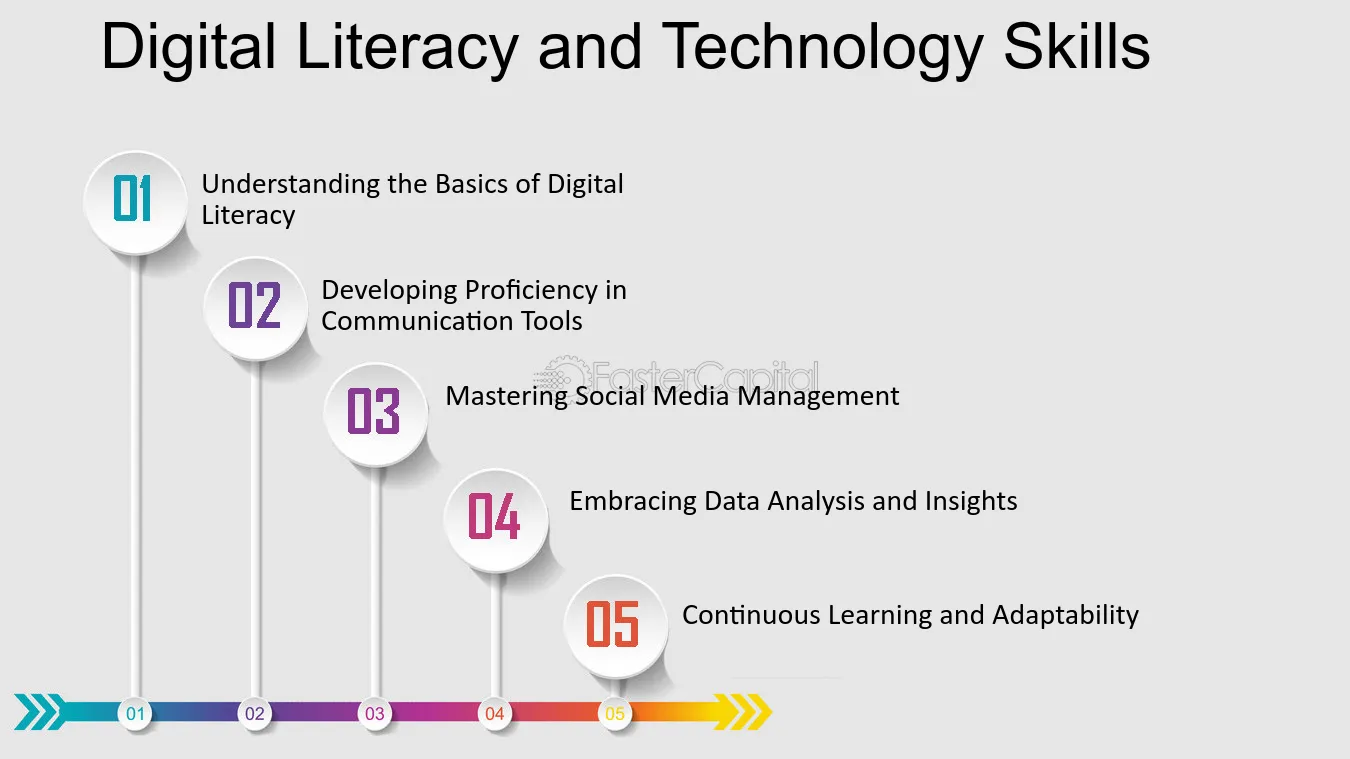
Education Events 2024 Focus On Shaping Digital-Ready Learners
Posted on : December 11, 2024

Have you ever wondered how prepared today’s students are for the digital world they are stepping into? With technology evolving at breakneck speed, it’s more important than ever for students to be digitally savvy. From navigating online resources to understanding the basics of coding, developing digital literacy is essential for success in education and beyond. But how can educators effectively build these skills in students, ensuring they are prepared to thrive in a tech-driven world?
In this blog, we’ll explore creative and practical strategies shared by the Education 2.0 Conference experts, i.e., one of the upcoming education events in 2024 to help students become more digitally adept, paving the way for their academic and future career success.
Why Is Digital Literacy Crucial For Students?
Digital literacy is no longer a luxury or an optional skill—it's a necessity. As more industries incorporate technology, having digital know-how becomes a key competency for students. Being digitally savvy means more than just using social media or navigating a Google search; it’s about understanding how to safely and effectively use digital tools, think critically about information, and adapt to new technological trends.

Source:Faster Capital
Benefits Of Digital Savvy Students:
- Enhances research and learning capabilities.
- Prepares them for the workforce.
- Encourages problem-solving and critical thinking.
- Promotes responsible digital citizenship.
Let’s explore some strategies discussed by the education conference experts that educators and parents can use to build these skills.
1. Integrating Technology Into Everyday Learning
One of the best ways to develop digital skills is by incorporating technology into everyday learning. By making technology a natural part of the learning environment, students become more comfortable and proficient in using it.
How To Implement Technology Into Learning:
- Use interactive tools like smart boards and tablets for classroom lessons.
- Encourage online collaboration through digital platforms like Google Classroom, Microsoft Teams, or Zoom.
- Introduce educational apps that enhance learning, such as Duolingo for language skills or Khan Academy for math and science.
- Incorporate online research projects that allow students to practice navigating databases, evaluating sources, and organizing digital information.
By blending technology with daily lessons, students develop practical digital skills while learning traditional subjects.
2. Teaching Digital Citizenship And Online Safety
In today’s connected world, it’s crucial for students to grasp the fundamentals of responsible digital citizenship. This means knowing how to interact respectfully online, protect their personal information, and avoid harmful behaviors such as cyberbullying.
Key Aspects Of Digital Citizenship:
- Privacy Awareness: Teaching students to guard their personal information online.
- Cybersecurity Basics: Understanding the importance of strong passwords, identifying phishing scams, and recognizing secure websites.
- Respectful Communication: Encouraging students to communicate thoughtfully and kindly in digital spaces.
- Media Literacy: Helping students discern between real and fake news, teaching them to think critically about the content they consume.
As per the insights shared by the education conference experts, i.e., our Education 2.0 Conference equipping students with these skills not only helps them stay safe online but also promotes a more respectful and thoughtful digital community.
3. Encouraging Creativity Through Digital Tools
Technology offers students countless opportunities to express creativity. Whether it’s making a short film, designing a website, or creating digital art, students can leverage digital tools to turn their ideas into reality.

Creative Digital Projects For Students:
- Video Projects: Have students create documentaries or video essays on topics they’re passionate about.
- Blogging: Encourage students to start blogs or digital journals where they can write about their interests or reflections on lessons.
- Graphic Design: Teach students how to use design software like Canva or Adobe Spark to create visually appealing presentations or posters.
- Coding Projects: Introduce students to coding through platforms like Scratch or Code.org, helping them develop problem-solving skills while being creative.
Innovation is driven by creativity, and with the help of digital tools, students can expand the limits of their imagination.
4. Promoting Problem-Solving with Technology
Problem-solving is a critical skill in the digital age. Technology provides an excellent platform for students to develop this ability, whether it’s through coding challenges, robotics, or even troubleshooting software issues.
How To Promote Problem-Solving Skills:
- Coding challenges: Introduce coding exercises where students have to figure out solutions to real-world problems using platforms like Code Academy or Python.
- Robotics clubs: Encourage participation in robotics clubs or competitions, where students must build and program robots to complete specific tasks.
- STEM-based learning: Incorporate technology into science, technology, engineering, and math lessons to challenge students to think critically and solve problems creatively.
Problem-solving in digital spaces helps students build resilience and adaptability, essential traits for future success.
5. Offering Digital Skill-Building Workshops
In addition to incorporating technology into daily learning, offering specialized workshops focused on digital skills can accelerate students’ proficiency.
Workshops To Consider:
- Basic Computer Literacy: Covering essential skills like word processing, spreadsheets, and email etiquette.
- Coding And Programming: Teaching the fundamentals of programming languages such as HTML, JavaScript, or Python.
- Multimedia Production: Hands-on sessions in video editing, podcasting, or graphic design to enhance student projects.
- Data Literacy: Introduce students the essentials of data analysis and visualization by using tools like Excel, Google Sheets, or Tableau.
According to the education conference experts, workshops provide students with hands-on experience and allow them to dive deeper into areas of interest within the digital landscape.
6. Encouraging Collaboration Through Technology
Collaboration is a key component of digital literacy. Today’s workplaces are increasingly remote and digital, making online collaboration skills vital. By encouraging students to work together using digital platforms, educators can help them develop these essential skills.
Ways To Promote Digital Collaboration:
- Group Projects Using Digital Tools: Encourage students to collaborate on assignments using shared digital workspaces like Google Docs, Trello, or Slack.
- Virtual Study Groups: Set up virtual meetings where students can study and brainstorm together online.
- Online Forums: Create discussion boards where students can post questions, share resources, and provide feedback to their peers.
These collaborative environments not only help students build teamwork skills but also mirror the way modern workplaces operate, making them better prepared for the future.
Conclusion
Developing digital savvy among students is crucial as we continue to move deeper into the digital age. As per the insights shared by the experts of the upcoming education events in 2024, i.e., Education 2.0 Conference, by integrating technology into the classroom, teaching online safety, promoting creativity, promoting problem-solving, offering workshops, and encouraging collaboration, educators can prepare students for a world that is increasingly driven by digital innovation.
The goal is to make sure students are not merely passive technology users but are actively engaged, thoughtful, and responsible digital citizens. With the right strategies in place, today’s students can become tomorrow’s tech-savvy leaders.
FAQs
Q1.What can I expect from the conference on digital literacy for students?
Answer. Attendees will explore cutting-edge strategies, tools, and techniques to promote digital literacy among students, with expert-led discussions, workshops, and networking opportunities designed to prepare students for a tech-driven future.
Q2. Why is digital literacy important for students?
Answer. Digital literacy equips students with the skills needed to navigate online tools, think critically, and succeed in an increasingly digital world, both academically and professionally.
Q3. How can teachers integrate digital skills into everyday lessons?
Answer. Teachers can use interactive tools, assign online research projects, and encourage digital collaboration platforms to seamlessly blend technology into everyday learning.
Q4. What is digital citizenship, and why is it important?
Answer. Digital citizenship involves teaching students how to act responsibly, safely, and respectfully online, ensuring they navigate digital spaces thoughtfully and protect their personal information.
Q5. How can coding help students develop digital skills?
Answer. Coding helps students build problem-solving, logical thinking, and creativity skills, making it an essential part of digital literacy development. Platforms like Scratch and Code.org make coding accessible and fun.











